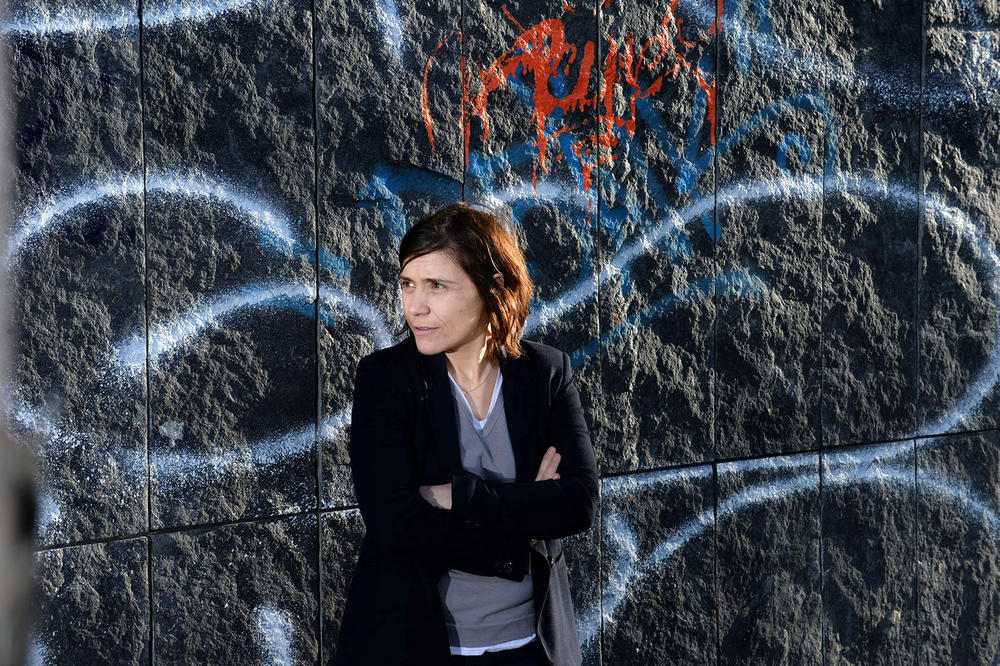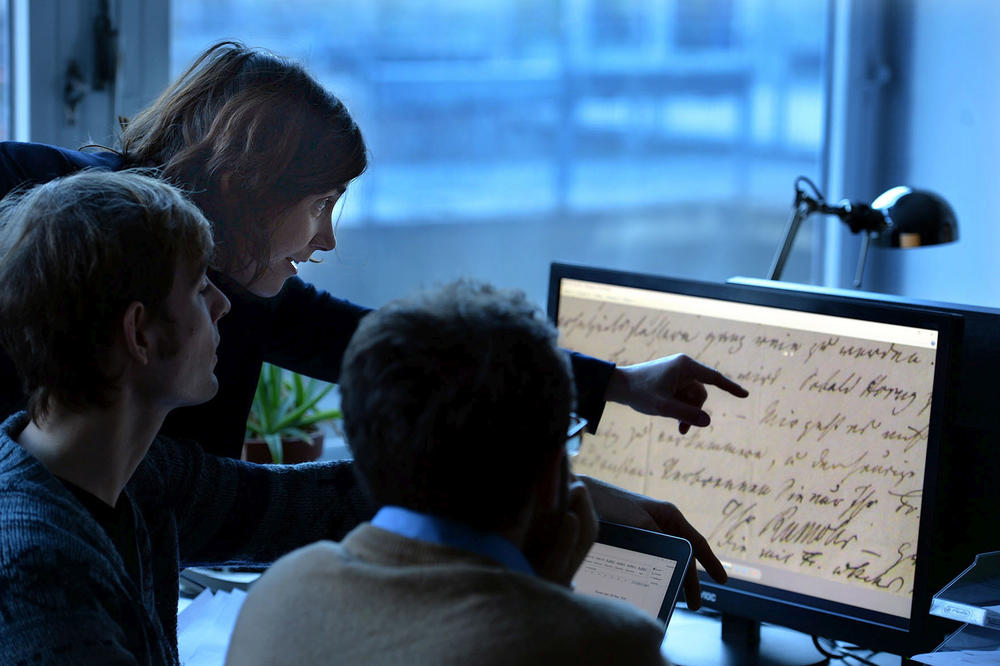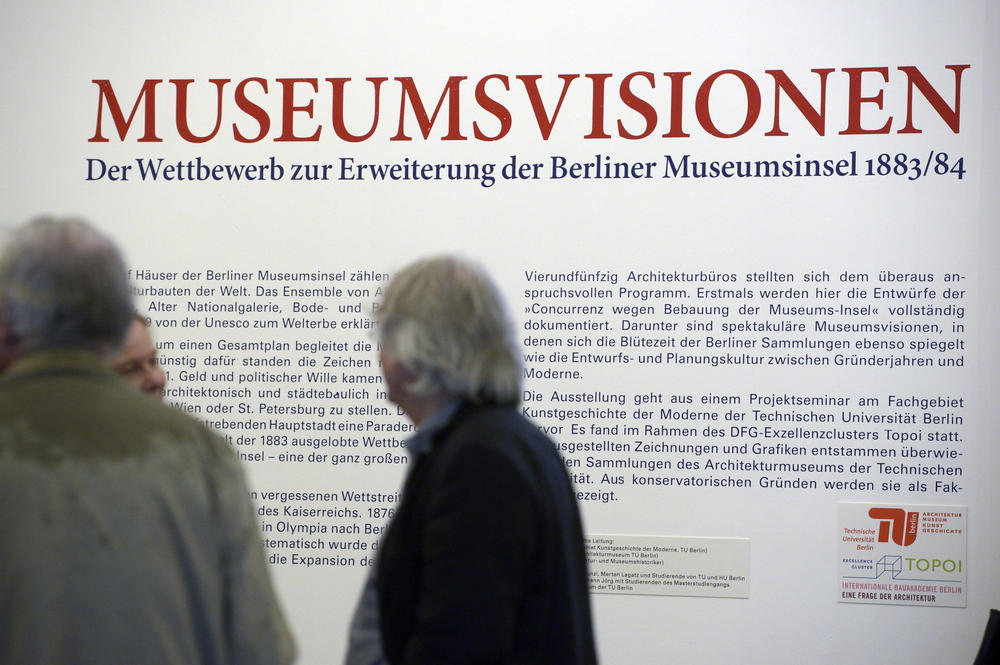The Dark Side of Art
Art historian and Leibniz Prize-winner Bénédicte Savoy tracks down the transnational history of museum objects.
Aug 14, 2017
Bénédicte Savoy is a professor of art history at Technische Universität Berlin.
Image Credit: David Ausserhofer
To whom does beauty belong? To whom does art, or the other objects in our museums, belong? Should they be owned by the cultures in which they were created, or by the museums where they currently reside? As a French national, an expert in German studies, and an art historian, Bénédicte Savoy has been concerned with these questions ever since her dissertation on the subject of the art theft from Germany by France around the year 1800. It is a topic that preoccupies her. First as a researcher at the Centre Marc Bloch in Berlin and then as a junior professor and lecturer at Technische Universität Berlin, Savoy opened up a completely new field within art historical perspectives on the art treasures that are stored or exhibited in museums around the world – often far removed from the place of their creation. Savoy’s innovative research – on the concepts of museums and in particular on art looting and on the transfer of art objects across Europe, their origin, location, and the foundation of identity – has in recent years been the means of injecting much new energy into art history and attracting international acclaim.
When Cultural Heritage Is Stolen
Savoy seeks to highlight the tensions that have from the very beginning been connected with the idea of the museum. “The shiny side of the coin almost always has a less pleasant reverse in the western world – namely the dark side of power, whether symbolic or real,” according to her. “One has to consider both sides – they are inextricably linked and form a kind of self-contradictory whole.” A museum should show both sides of the object: the place in which it is seen, and at the same time it must reference the place where the object no longer is, its place of creation or discovery. The circumstances which led to the displacement to its current location, often across political borders – whether for economic or war-related reasons or out of curiosity – should always be presented along with the objects. Yet at present, many museum exhibits do not relate the whole history of the object.
Savoy submitted studies of the symbolic and material metamorphosis of objects resulting, for example, from hostile action or relocation during the colonial era. Her research – in which she always involves students – is dedicated to the collective emotions that accompany the experience of the theft of cultural heritage or its acquisition by victors in war. The argument over the exhibition of the famous bust of Nefertiti, discovered in Egypt by the German explorer Ludwig Borchardt and brought to Germany, is an example of this. That argument has been raging since 1913.
Savoy ensures that her students are involved in research work at an early stage…
Image Credit: David Ausserhofer
Current events also benefit from Savoy’s expertise: One example is the agonizing over the design of the Humboldt Forum in the newly built Berliner Schloss, which is destined to unite the ethnological collections of the Berlin museums from 2019. Another is the case of the art dealer Cornelius Gurlitt, in whose apartment works of art, missing since 1945, were discovered in 2013 and consequently attention was drawn on the European art market at the time of National Socialism. A new two-nation project under the supervision of Savoy is the first to examine the German-French “art market” system and its players, including art dealers, collectors, and diplomats of the Third Reich.
The Center of German Romanticism Lies in France
At the Topoi Cluster of Excellence on antiquity, a research collaboration involving Freie Universität and Humboldt-Universität, Savoy is involved inter alia with a project on the construction of Berlin’s Museum Island at the end of the 19th century. It examines the way in which museum areas for the display of ancient works of art and edifices are designed. In other studies on the mobility of artists, she has identified Paris as a capital of German romanticism. “An entire generation of young German intellectuals and artists who migrated to Paris, lived and worked there, and was educated there, was instrumental in shaping the cultural landscape of the French capital in the museums and libraries around 1800. They effectively became contributors to the transnational history of objects.” The consequences can still be felt today,” she says. Friedrich Schlegel, Jacob Grimm, the librettist Carl Maria von Webers, and Helmina von Chézy were among them.
Savoy curated several large and very successful exhibitions, with the aim of fostering a broad social understanding of culture and portraying the international branches of the art and cultural scene. Significant attention was aroused for example by the 2011 exhibition Napoleon and Europe. Dream and Trauma in the Bundeskunsthalle in Bonn, and the exhibition about the Humboldt brothers at the Paris Observatory in 2014. She presented the results of her research project at the Topoi Cluster of Excellence in the exhibition Museum Visions, which was developed with students in a joint concept and shown in 2015 in the model room of the Berlin Bauakademie. The exhibition documented the competition for the contract to build the Berlin Museum Island in 1883 – now, with its buildings, part of a UNESCO World Heritage Site. Since 2017, Savoy and her team have published one of the first Open Access journals of Technische Universität Berlin, the Journal for Art Market Studies. The journal features articles about the international art market, in particular the conditions and mechanisms of art production, art dealing, and the reception of art. It is freely accessible for everyone and adheres to international standards with respect to transparency, expert opinions, copyright, and long-term archiving.
… students were team members working on the “Museum Visions” exhibition, which focused on the plans for the new design of the Berlin Museum Island at the end of the 19th century.
Image Credit: Bernd Wannenmacher
This tireless young researcher has received many awards for her work both in France and in Germany, including awards from the Berlin-Brandenburg Academy of Sciences and Humanities and the Académie Française. In 2013 she was accorded the honor of being named “Knight of the Order of Merit of the Republic of France.” The 45-year-old attained a high point of her career with the award in 2016 of the Gottfried Wilhelm Leibniz Prize by the German Research Foundation (DFG), which comes with prize monies of 2.5 million euros. When Savoy was told that she was going to receive this prize, her special team spirit once more came to the fore. Her foremost emotion was not euphoria, but relief. “I immediately understood that I could now offer my wonderful, creative team new perspectives, security of planning, and the possible implementation of research ideas. The constant effort to win funding for limited duration projects takes up an enormous amount of energy; now research is going to benefit.”
An Ambassador at the Peak of Intellectual Life
The future holds even more exciting developments: last year, Savoy was appointed to an international chair at the Collège de France. Her inaugural lecture in March of this year was broadcast live over the internet. The newly instigated chairs at the Collège de France enable high-ranking visiting researchers from foreign departments to work for five-year spells, though they may also remain at their respective universities. The French “Grand Établissement” is often referred to by the media as the “Olympus of French intellectual life”; with this appointment, Savoy has joined their ranks. She now commutes between Paris and Berlin, carrying the knowledge of museum objects and their original meanings, wherever their location, across borders – as an international scholar and ambassador.



